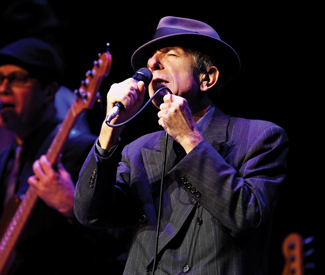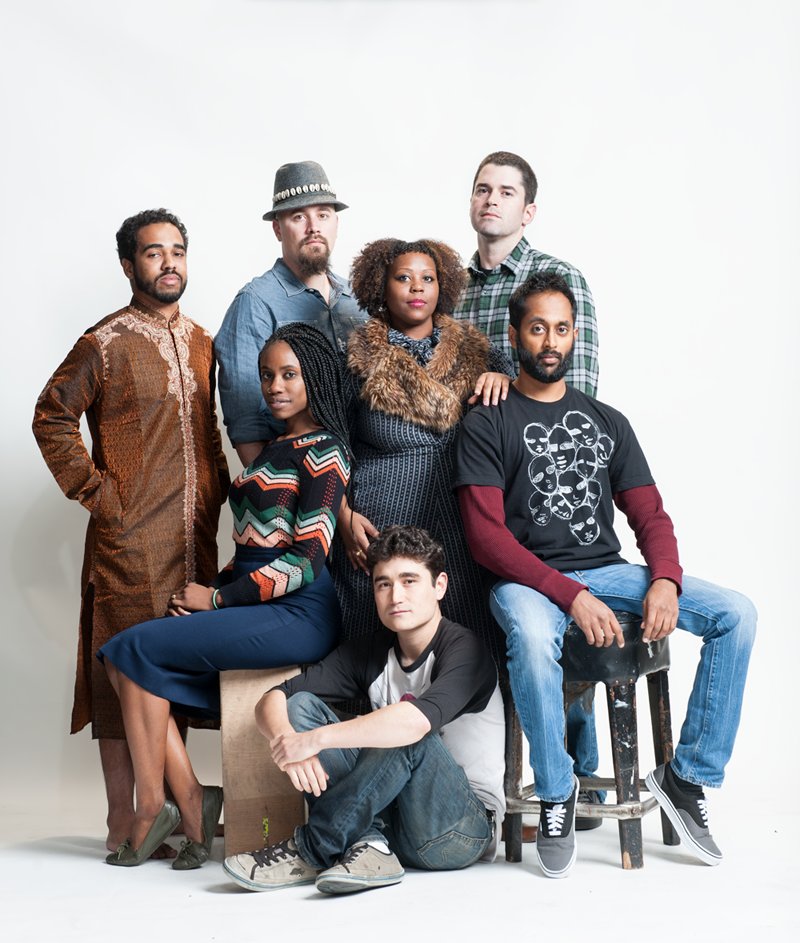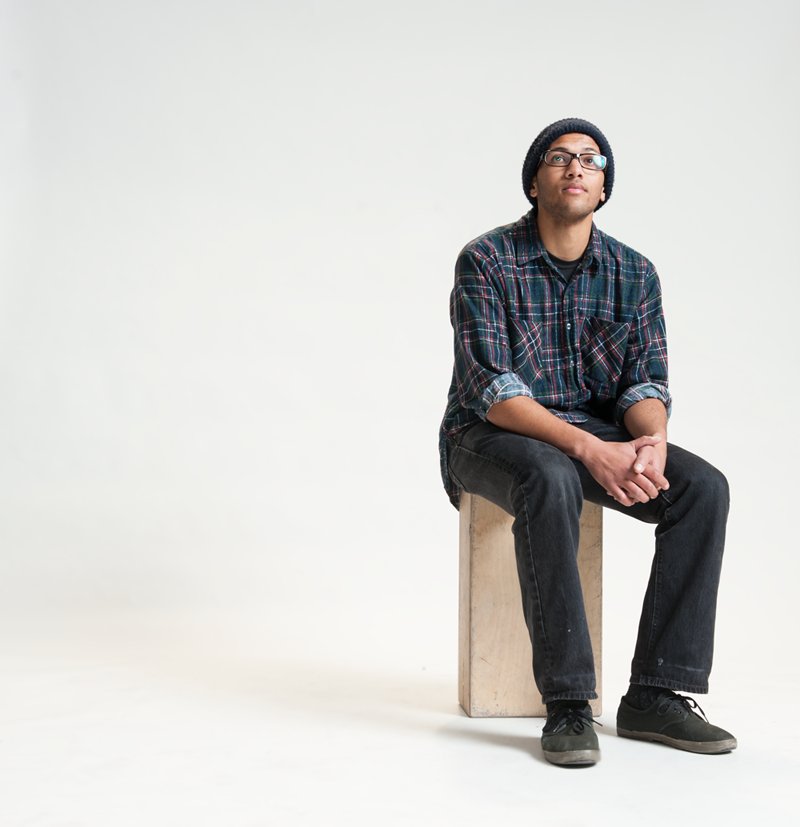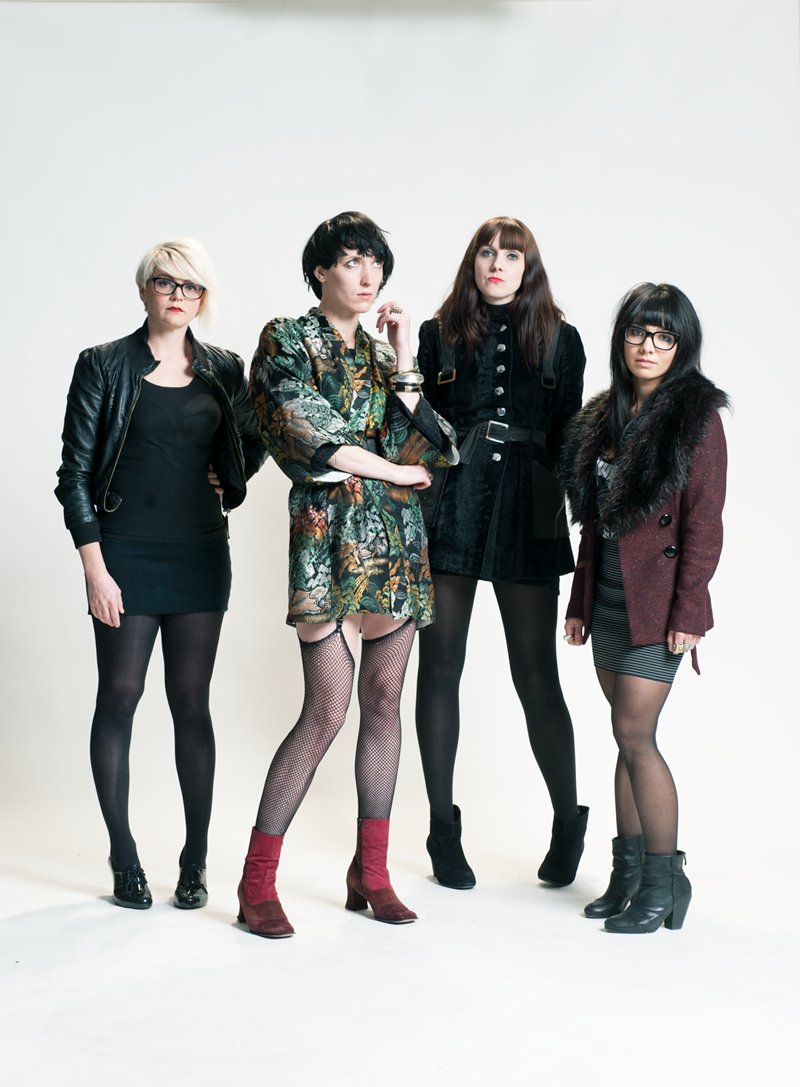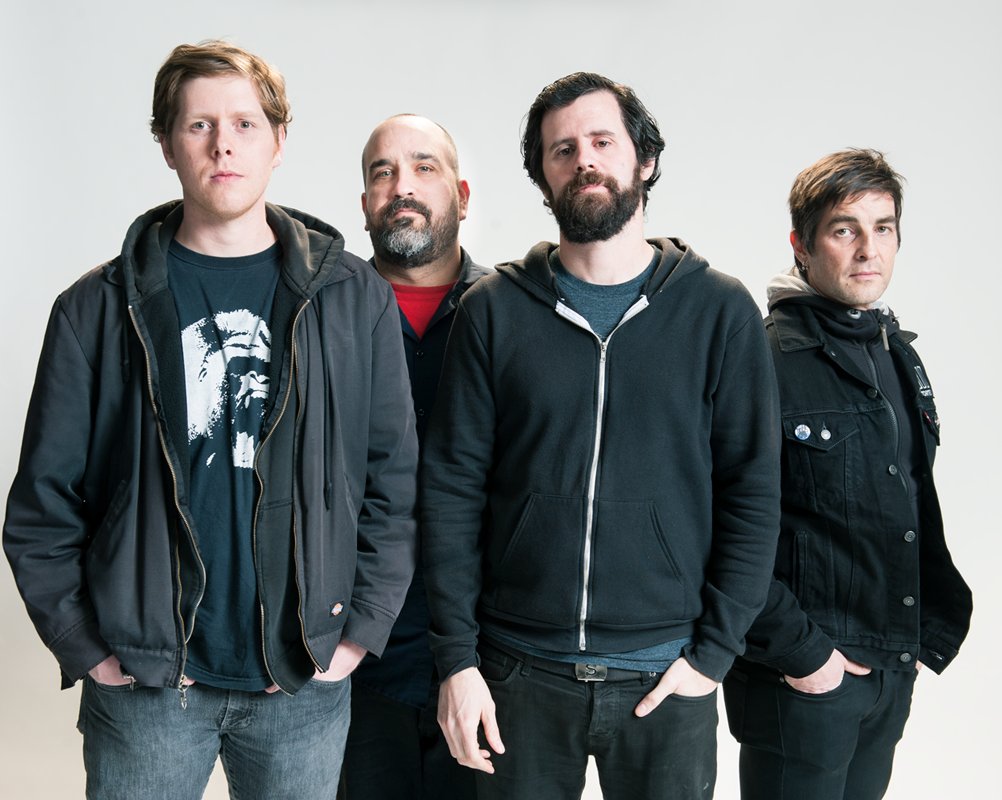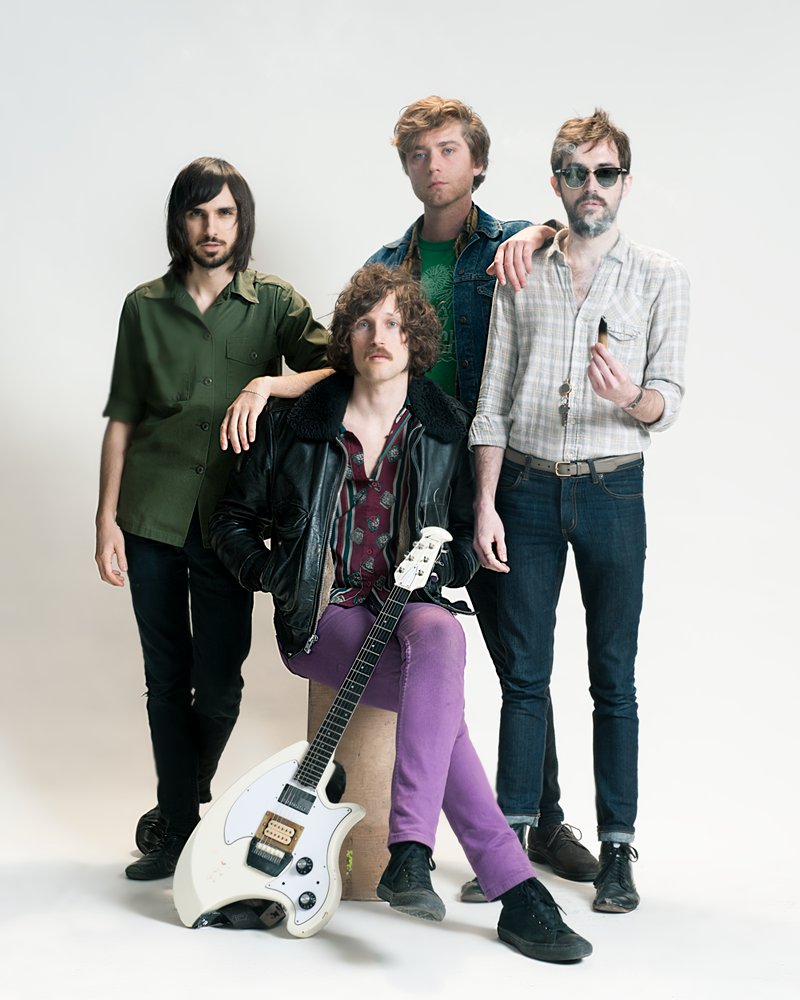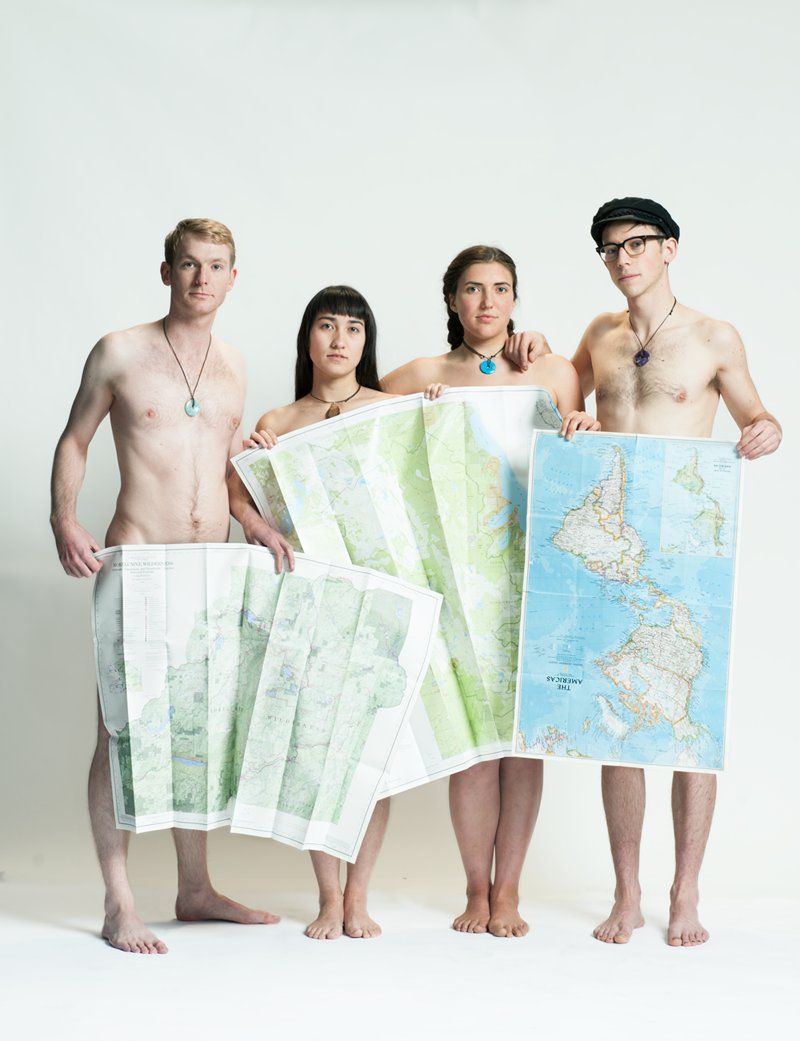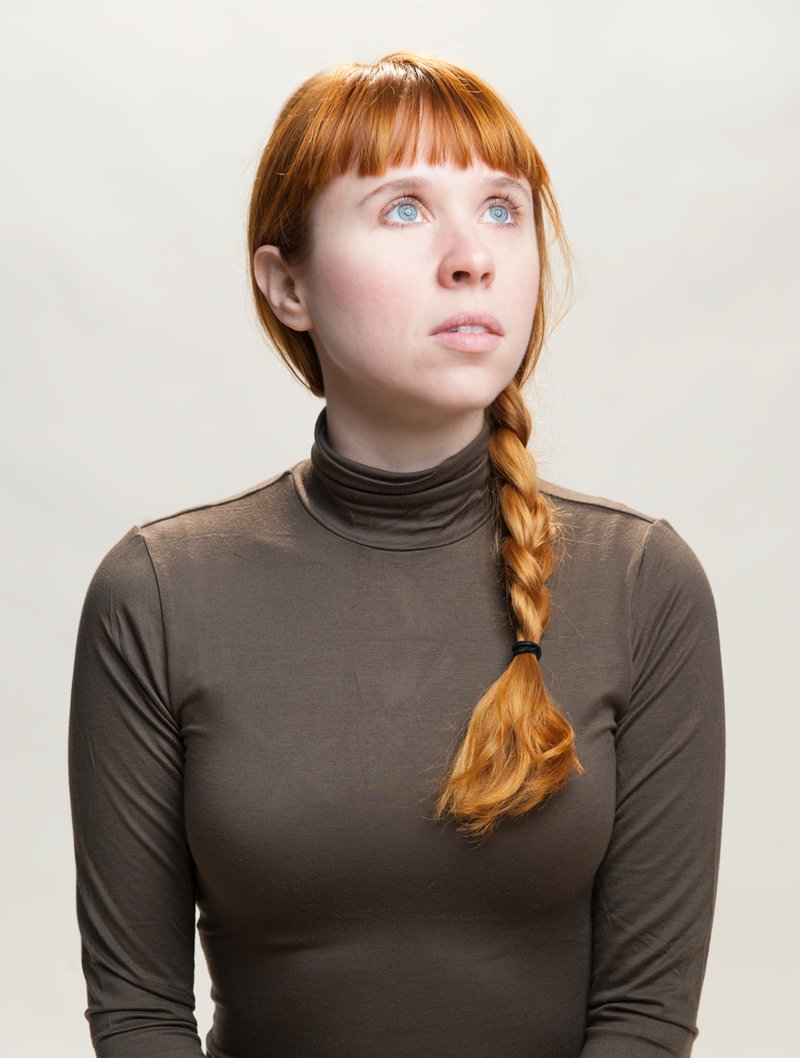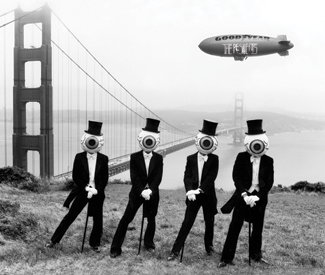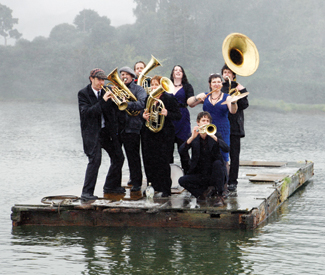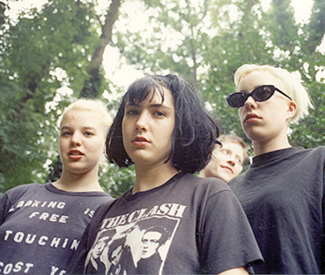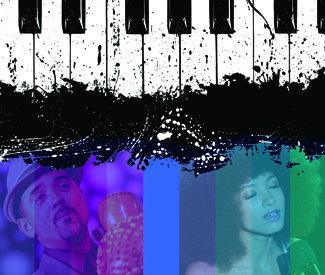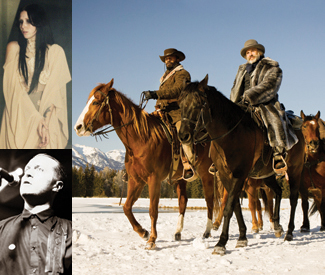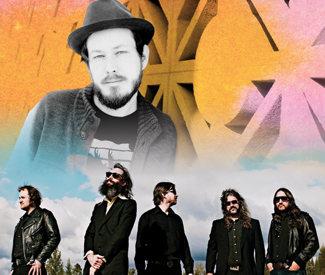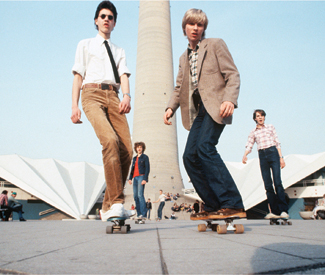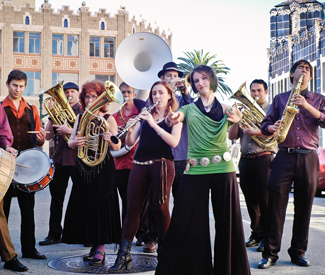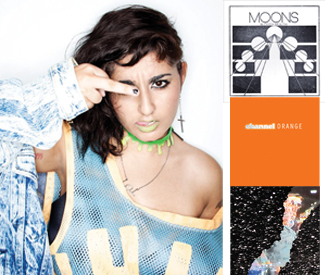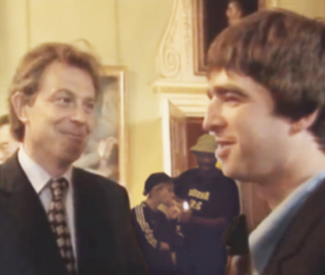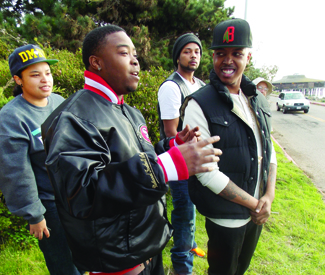YEAR IN MUSIC Local musicians, rappers, producers, and music writers sound off on the year’s best songs, album releases, shows, personal triumphs, and local acts.
HANNAH LEW, GRASS WIDOW
TOP 10 OF 2012
1. Starting our own label HLR and releasing our own record (Internal Logic)
2. Total Control’s LP
3. Touring with the Raincoats and singing “Lola” with them every night
4. Getting obsessed with Silver Apples
5. Hollywood Nails
6. Wymond Miles LP
7. Scrapers (band)
8. Sacred Paws (band)
9. Making eight music videos and losing my mind
10. Wet Hair’s LP
ANTWON, RAPPER
TOP 10 2012 RAP JAMZ
1. DJ Nate, “Gucci Gogglez” 2. Chief Keef, “Ballin” 3. French Montana, “Shot Coller” 4. Chippy Nonstop, “Money Dance” DJ Two Stacks remix 5. Cash Out, “Cashin’ Out” 6. Future, “Turn on the Lights” 7. Gucci Mane, “Bussin Juggs” 8. Juicy J, “Drugged Out” 9. Lil Mouse, “Don’t Get Smoked” 10. Lil Reese, “Traffic” feat. Chief Keef
MICHAEL KRIMPER, GUARDIAN
THE ENDLESS DESIRE LIST
(IN NO PARTICULAR ORDER, OR, OUT OF ORDER)
1. Les Sins/”Fetch”/12″ (Jiaolong)
Run, fall, catch your desire.
2. The Soft Moon/”Want”/Zeros (Captured Tracks)
Infinite want, can’t have it. O, ye of bad faith.
3. Frank Ocean/”Pyramids”/channel ORANGE (Def Jam)
Pimping Cleopatra, whoring the pyramids.
4. Daphni aka Caribou/”Ye ye”/Jiaolong (Jiaolong)
Affirmation on repeat.
5. Grimes/”Genesis”/Visions (4AD)
Whatever, you know you like it.
6. Todd Terje/”Inspector Norse”/It’s the Arps (Olsen/Smalltown Supersound)
Inspecting never felt so good.
7. Burial/”Kindred”/Kindred (Hyperdub)
Kindred outcasts, jealously desiring their solitude.
8.John Talabot/”Estiu”/Fin (Permanent Vacation)
If a permanent vacation wasn’t hell, this might be its soundtrack.
9. Purity Ring/”Obedear”/Shrines (4AD)
Nothing pure in this abject need.
10. Kendrick Lamar/”A.D.H.D.”/good kid m.A.A.d city (Interscope)
Crack babies: she says, distracted, endless desire.
TYCHO, AKA SCOTT HANSEN
FAVORITE BAY AREA AND BAY AREA-AFFILIATED MUSIC ACTS
1. Toro Y Moi 2. Christopher Willits 3. Blackbird Blackbird 4. Jessica Pratt 5. Sam Flax 6. Ty Segall 7. Yalls 8. Doombird 9. Little Foxes 10. Dusty Brown
BEN RICHARDSON, GUARDIAN
BEST METAL ALBUMS OF 2012
1. Dawnbringer, Into the Lair of the Sun God (Profound Lore)
2. Asphyx, Deathhammer (Century Media)
3. Woods of Ypres, V: Grey Skies & Electric Light (Earache)
4. Uncle Acid and The Deadbeats, Blood Lust (Metal Blade)
5. Pallbearer, Sorrow And Extinction (Profound Lore)
6. Windhand, Windhand (Forcefield Records)
7. Omens EP
8. Hour of 13, 333 (Earache)
9. Gojira, L’enfant Sauvage (Roadrunner)
10. Lord Dying, Demo
CALEB NICHOLS, CHURCHES
TOP 10 VINYL PURCHASED IN 2012, AND WHERE I PURCHASED THEM
1. The Shins, Port Of Morrow (Amazon — forgive me, I had a gift card.)
2. The Walkmen, Heaven (Urban Outfitters clearance — yeah, I know, but you can’t beat brand-new vinyl for $10.)
3. Various Artists, Death Might Be Your Santa Claus (Boo Boo Records, San Luis Obispo. My hometown record store.)
4. Ella Fitzgerald, Live at Montreaux (Boo Boo Records, San Luis Obispo)
5. Mahalia Jackson, Christmas With Mahalia (Abbot’s Thrift, Felton, CA — Great thrift store in the Santa Cruz Mountains.)
6. Benjamin Britten/Copenhagen Boys Choir, A Ceremony Of Carols (Abbot’s Thrift, Felton, Calif.)
7. Thurston Moore, Demolished Thoughts (Urban Outfitters clearance)
8. The Hunches, Exit Dreams (1234Go! Records, Oakland)
9. Various Artists/Angelo Badalamenti, Wild At Heart OST (Streetlight Records, Santa Cruz)
10. Tijuana Panthers, “Crew Cut” seven-inch (Picked up at show — Brick and Mortar Music Hall, San Francisco)
KACEY JOHANSING, SINGER-SONGERWRITER
TOP 10 FAVORITE SONGWRITERS IN THE BAY AREA
1. Sleepy Todd
2. Tommy McDonald of The Range of Light Wilderness
3. Emily Ritz of Yesway and DRMS (biased opinion, I know)
4. Kyle Field of Little Wings
5. Alexi Glickman of Sandy’s
6. Michael Musika
7. Bart Davenport
8. Indianna Hale
9. Jeffrey Manson
10. Sonya Cotton
HALEY ZAREMBA, GUARDIAN
TOP TEN CONCERTS OF 2012
1. El Ten Eleven at the New Parish
2. Good Old War at Slim’s
3. Girls at Bimbo’s
4. St Vincent and Tune-Yards at The Fox
5. Bomb the Music Industry! at Bottom of the Hill
6. Fucked Up at Slim’s
7. Amanda Palmer and the Grand Theft Orchestra at the Fillmore
8. Ariel Pink at Bimbo’s
9. Conor Oberst at the Fillmore
10. Titus Andronicus at the Great American Music Hall
CARLETTA SUE KAY, SINGER-SONGWRITER
BEST OF 2012
1. “See All Knows All,” A Thing By Sonny Smith at The Lost Church.
2. “Silent Music” music ephemera show at Vacation (651 Larkin) curated by Lee Reymore, opening party set by the Fresh and Onlys, after -party pot cookie monsters invade the Gangway.
3. Dusty Stax & The Bold Italic Present: “Summer Soul Friday Night”.
4. Wax Idol’s Hether Fortune fronting the Birthday Party cover band at Vacation.
5. Jessica Pratt’s debut LP (Birth Records).
6. Bambi Lake at the Museum of Living Art.
7. Pruno Truman, aka Heidi Alexander from the Sandwitches “Sleeping with the TV on” b/w Carletta Sue Kay “No, no” (Weird World).
8. Opening for Baby Dee at Brick & Mortar Music Hall.
9. Kelley Stoltz’s cover of “Sunday Morning” on Velvet Underground and Nico by Castle Face & Friends (Castle Face).
10. Christopher Owens premiers Lysandre live at the Lodge.
11. Mark Eitzel’s Don’t Be A Stranger (Merge) and its accompanying promo video series. Featuring Grace Zabriskie, Neil Hamburger, Parker Gibbs et al.
EMILY JANE WHITE, MUSICIAN
TOP 10 SONGS OF 2012 BY FEMALE ARTISTS
1. “Spinning Centers” Chelsea Wolfe: Unknown Rooms
2. “Who Needs Who” Dark Dark Dark: Who Needs Who
3. “Oblivion,” Grimes: Visions
4. “Old Magic” Mariee Sioux: Gift for the End
5. “Apostle” Marissa Nadler: The Sister
6. “In Your Nature” Zola Jesus: seven-inch (w/ David Lynch Re-Mix)
7. “Silent Machine” Cat Power: Sun
8. “Moon in My Mind,” Frankie Rose: Interstellar
9. “Serpents,” Sharon Van Etten: Tramp
10. “Video Games,” Lana Del Rey: Born to Die
MORNIN’ OLD SPORT
FAVORITE ARTISTS/ALBUMS
1.Moons, Bloody Mouth
2.Patti Smith, Banga
3.Mykki Blanco, Cosmic Angel: The Illuminati Prince/ss Mixtape
4.ABADABAD, The Wild EP
5.Kendrick Lamar, Good Kid m.A.A.d city
6.Shady Hawkins, Dead to Me
7.Howth, Newkirk
8. Bikini Kill EP (reissue)
9. Sharky Coast, Pizza Dreamz demo
10. FIDLAR, No Waves/No Ass seven-inch
ROSS PEACOCK AND NATHAN TILTON, MWAHAHA
ALMOST TOP 10 ALBUMS (IN NO PARTICULAR ORDER)
1. Air, Le voyage dans la lune
2. Naytronix, Dirty Glow
3. I Come To Shanghai, Eternal Life Vol. 2
4. Beak, >>
5. Steve Moore and Majeure, Brainstorm
6. Clipd Beaks, Wake
7. Brian Eno, LUX
8. Neurosis, Honor Found in Decay
ALMOST TOP 10 SHOW (IN NO PARTICULAR ORDER)
1. Pulp at the Warfield: Think that was this year. Cocker sings sexy
2. Red Red Red: just saw this guy play at a warehouse in Oakland…live house music made with actual hardware!
3. Flying Lotus at the Fox was pretty epic….. insane visuals.
5. Lumerians at the Uptown
6. Neurosis at the Fox: Fuck!
7. Deerhoof at SXSW ….. maybe the best live band in the universe
8. Indian Jewelry at the Terminal …. strobe light universe
EMILY SAVAGE, GUARDIAN
LIVE SHOWS THAT CREATED THE MOST POSI MEMORIES IN 2012
1. Feb. 14: Black Cobra, Walken, Yob at New Parish
2. Feb. 23: Budos Band and Allah-Lahs at the Independent
3. March 30: Hot Snakes at Bottom of the Hill
4. April 10: Jeff Mangum at the Fox Theater,
5. July 21: Fresh and Onlys and La Sera at Phono Del Sol Music Fest
6. July 28: Total Trash BBQ Weekend at the Continental Club
7. Aug. 11: Metallica at Outside Lands
8. Aug. 31: Eyehategod at Oakland Metro
9. Oct. 9: Saint Vitus at the Independent
10. Oct. 27: Coachwhips and Traditional Fools at Verdi Club
NEW ALBUMS I LISTENED TO ENDLESSLY IN 2012
1. Grass Widow, Internal Logic (HLR)
2. Cloud Nothings, Attack on Memory (Carpark)
3. Ty Segall, Slaughterhouse (In the Red)
4. Dum Dum Girls, End of Daze EP (Sub Pop)
5. Frankie Rose, Interstellar (Slumberland)
6. Godspeed You! Black Emperor, Alleluja! Don’t Bend! Ascend! (Constellation)
7. The Fresh and Onlys, Long Slow Dance (Mexican Summer)
8. THEESatisfaction, awE naturalE (Sub Pop)
9. Terry Malts, Killing Time (Slumberland)
10. Guantanamo Baywatch, Chest Crawl (Dirtnap Records)
TAYLOR KAPLAN, GUARDIAN
TOP 10 ALBUMS OF 2012
1. Hiatus Kaiyote: Tawk Tomahawk (self-released) I could tell you that a bunch of white Australians somehow merged the sound-worlds of Erykah Badu, J Dilla, and Thundercat into a 30-minute, self-released debut LP that rivals the best work of any of those musicians, but you just might have to hear for yourself: hiatuskaiyote.bandcamp.com.
2. Lone: Galaxy Garden (R&S) This is the Lone album we’ve been waiting for. The British laptop producer’s past efforts, while exquisitely lush, were inhibited by a sense of hollow simplicity; Galaxy Garden, his danciest effort yet, shows improvement on nearly every front, from generously layered percussion, to a nuanced, bittersweet take on melody and harmony. A gorgeous fulfillment of Lone’s hedonistic vision.
3. Scott Walker: Bish Bosch (4AD) Difficult as it is to proclaim Bish Bosch 2012’s best album, (its hulking weight and unyielding grimness renders casual listening a difficult proposition) no LP this year has matched its gutsiness and sonic adventurousness, or consolidated so many ideas into a singular space. An array of musical possibilities as dense, thorny, and encyclopedic as a Pynchon novel, with Walker’s quivering, operatic baritone as its sole, anchoring force.
4. Zammuto: s/t (Temporary Residence) Former Books member Nick Zammuto’s solo debut impresses with its vitality and strength of purpose. Despite the heightened emphasis on conventional songwriting this time around, Zammuto strikes that divine balance between bewildering sound-collage and pop approachability that made the Books such an endearing project in the first place.
5. Tame Impala: Lonerism (Modular) Kevin Parker’s first LP as a lone, multitracking solo artist under the Tame Impala moniker, is a bubbly, golden pop album, despite its pervasive theme of existential dread. Its hooks achieve a weird form of transcendence, befitting the Beatles and Britney Spears in equal measure.
6. Laurel Halo: Quarantine (Hyperdub) Much like Oneohtrix Point Never’s Replica (2011), Quarantine is ideal soundtrack material for those late-night, marathon web-surfing sessions that seem to transcend time and space. Halo’s cold, glassy electronics are anchored by dry, straightforward vocals on an album that occupies a mysterious void between vocal pop and ambient electronica.
7. Field Music: Plumb (Memphis Industries) Less a song-cycle than a series of hooks, Field Music’s latest is the work of a band with a hundred wonderful ideas up its sleeve, and only 35 minutes to communicate them. Channeling the impulsive energy of Abbey Road‘s second half with proggy dexterity, Plumb cements this vastly underrated British outfit as one of the most visionary songwriting duos around.
8. THEESatisfaction: awE naturalE (Sub Pop) Splitting the difference between progressive hip-hop and neo-soul, this Seattle duo’s breakthrough record zips through its 30-minute run-time with remarkable tenacity and economy. Bearing the exhilarating energy of J Dilla’s rip-roaring beat-tapes, and shrewd lyricism that effortlessly balances the political, the personal, and the cosmic, awE naturalE feels urgently, confrontationally NOW.
9. Nik Bärtsch’s Ronin: Live (ECM) Not quite nu-jazz, math-rock, or classical minimalism, Swiss ensemble Nik Bärtsch’s Ronin is as compelling, and innovative, as any live band around, tackling Reichian time signatures with the borderline robotic technical ability of Juilliard grads, and the undeniable groove of an airtight funk band.
10. d’Eon: LP (Hippos In Tanks) Approaching the tongue-in-cheek meta-pop of James Ferraro’s Far Side Virtual with a twisted mythology of Christianity and Islam vs. iPhones and the Internet, and a bizarrely heavy dose of Phil Collins’ influence, d’Eon’s LP‘s totally dubious backstory is redeemed by solid songwriting, lush synths, killer keyboard solos, and a ’70s big-time art-rock sensibility. The most convoluted release to date from the prankish Hippos In Tanks imprint.
Honorable mention: Farrah Abraham: My Teenage Dream Ended (self-released) You can’t make this shit up: the year’s weirdest, most haunted and terrifying album wasn’t brought to us by Swans or Scott Walker, but the star of MTV’s Teen Mom. Trapped between the real world, and a web-based alter-reality, it’s the sound of an All American girl, brought up on The Notebook and Titanic, finding herself imprisoned in a Lynchian nightmare.

